As we begin 2024, it can be hard to imagine a time when we only used our phones for talking to people and maybe sending an occasional text message. Today, there are somewhere around five million different apps available for the iPhone serving every purpose imaginable.
Today, searching the iPhone App Store for “rowing” returns listings for over 400 different apps. In early 2009, that same search gave just one result – SpeedCoach Mobile (as CrewNerd was known at the time). With the 15th anniversary of that first release approaching, I thought this would be a good time to look back and reflect on the journey that brought us here.
Ship it!
On March 24th, 2009, I received an email from Apple notifying me that the first version of CrewNerd was approved for public release, making it the first rowing & paddling app for the iPhone. Apple had just launched the App Store a few months earlier and the newest iPhone was the iPhone 3G, with a 3.5-inch 480×320 display and 16 GB of storage. Following several busy months of development and testing, the app was finally ready!
By today’s standards, that first version was quite primitive, but the essential features were all there – stroke rate, time, pace, and distance, along with custom workouts and workout history. For a small fraction of the cost of a SpeedCoach ($49 lifetime for CrewNerd vs. $450 for a SpeedCoach), rowers could now get those same capabilities, and more, on a device that they already owned. And through the magic of software and ever-improving hardware, the app would just continue to get better at no additional cost!
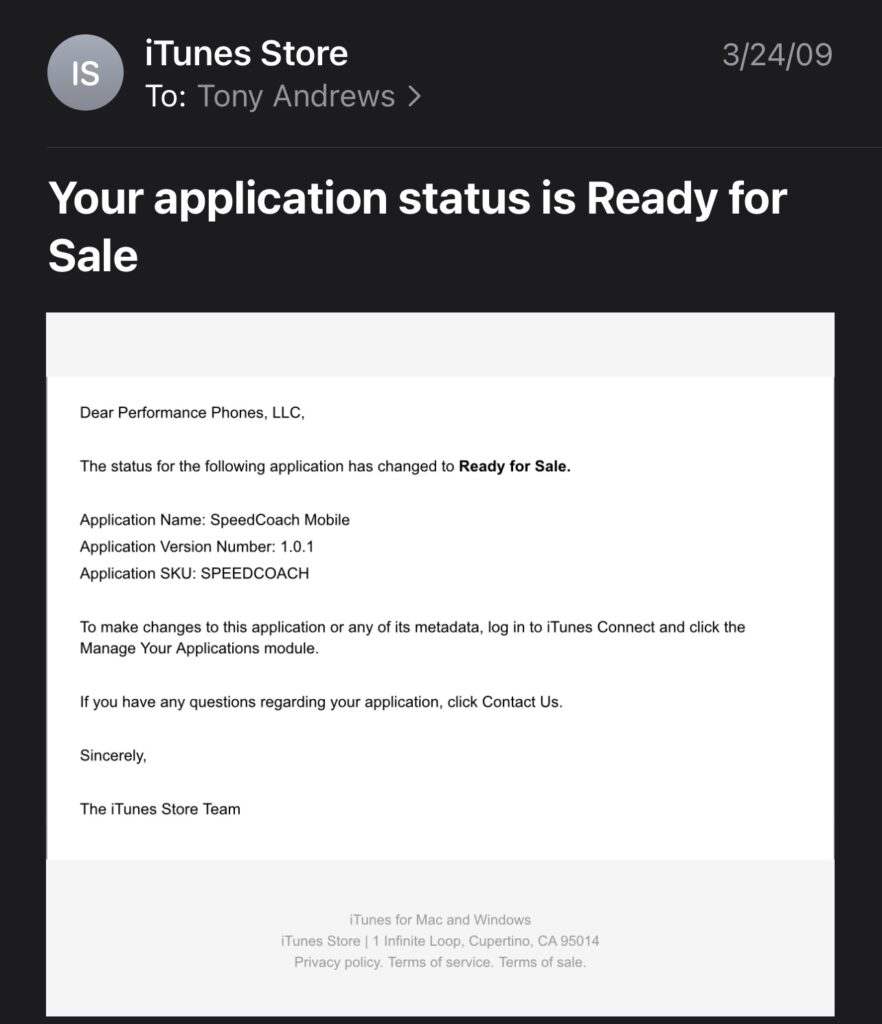
Now, 15 years and over 140 updates later, the cycle of improvement continues with exciting new features like support for Apple Watch and a heads-up, augmented-reality display via ActiveLook eyewear.
Before the iPhone
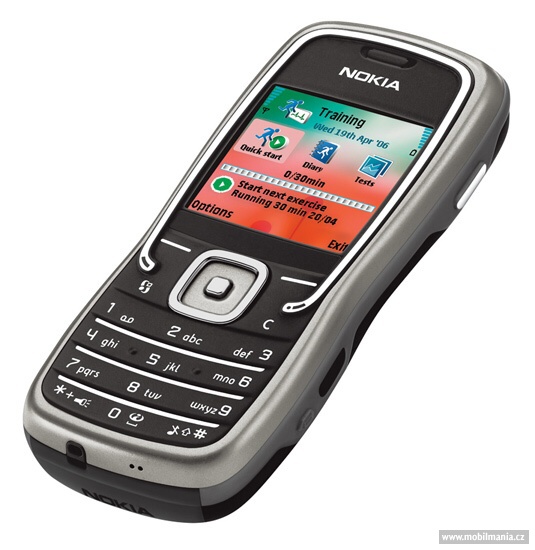
The history of CrewNerd begins earlier, in 2007, before the iPhone even existed. In 2006, Nokia (one of the leading phone makers at the time) released the Nokia 5500 Sport. The 5500 Sport’s display was tiny by today’s standards (208×208) but it was the first phone to include a 3-axis accelerometer that could be used by third-party apps, and I realized that this was the key to being able to effectively turn a smartphone into a SpeedCoach since an app could detect rowing strokes by sensing the horizontal acceleration of the boat.
At that time, GPS was not available in any mobile phone, but there were external GPS receivers that could communicate with phones via Bluetooth, making it possible to measure distance and speed.
So in 2007, I began writing an app (in C++) for the 5500 Sport that implemented the core features of time, distance, pace, and stroke rate with a user interface that would be intuitive for rowers. Testing the app side-by-side with a SpeedCoach, the results were encouraging, although there was nothing like an app store at the time, making it unclear how the app could be sold.
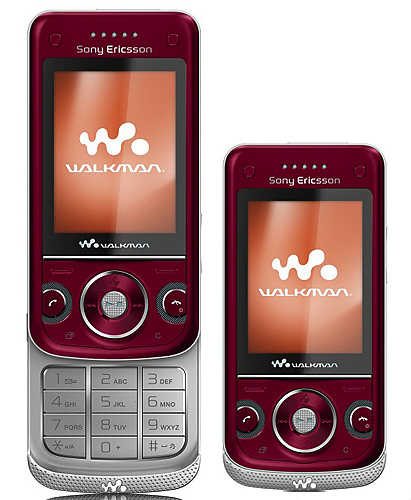
Around the same time, other phones were starting to include accelerometers, and some began to support GPS as well. One of the first of these was the Sony Ericsson W760, which supported a different application model based on Java (J2ME).
Building on what I had learned about detecting strokes with the 5500, I developed the second iteration of the app for the W760, taking advantage of the larger display and built-in GPS. In 2008, as soon as the app was sufficiently complete, I bought several of these phones and gave them to a few rowing friends for testing.
But there was still no established marketplace for apps, meaning each app developer was solely responsible for handling promotion, distribution, monetization, and servicing of their apps. As an independent software developer, this seemed like an insurmountable problem.
Finally, an App Store!
In 2008, Apple released its first software development kit for the iPhone, and in July of that year, the App Store was first opened. It was clear that this was the final piece of the puzzle, giving developers the ability to easily monetize their apps and distribute app updates to customers. And the iPhone itself was a huge improvement over the flip-phones of the day.
So, anxious to capitalize on my work and gain the first-mover advantage, I began the process of moving the app to the iPhone. This meant completely re-writing the app for the third time, this time in Objective-C for iOS. The user interface would also be much more sophisticated than anything I had created so far. I worked through the Fall and Winter, and by January the app was getting close. I continued checking the App Store to make sure no other rowing apps had beat me to the punch.
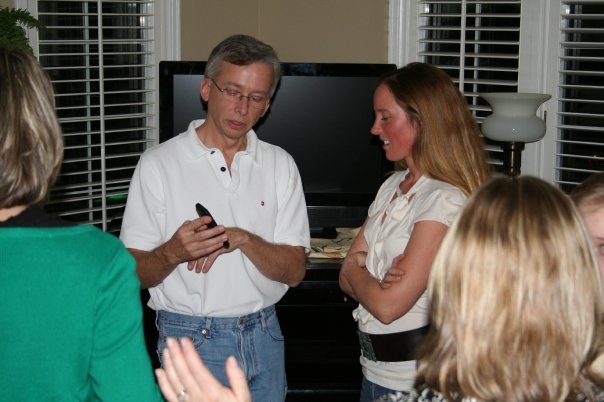
Today, when I prepare an app update, it usually takes just a few hours to get Apple’s approval and release it. But in 2009, the process was much slower, especially for the first release of a new app. It took a few weeks of iteration and feedback from Apple before the first version was approved for release on March 24th.
In this photo, I’m showing a pre-release version of the app to Olympic coxswain Mary Whipple, in early 2009.
I never would have guessed that I would still be working actively on the app 15 years later!
Then and Now
The first users of CrewNerd faced a lot of challenges and I’m grateful for all of those early adopters! For several years, iPhones would remain very susceptible to water damage and their screens could be difficult to see in bright sunlight. The waterproof cases available then were clumsy to use and difficult to mount securely. Over time, though, LifeProof created a line of sturdy waterproof cases and better mounting solutions became available.
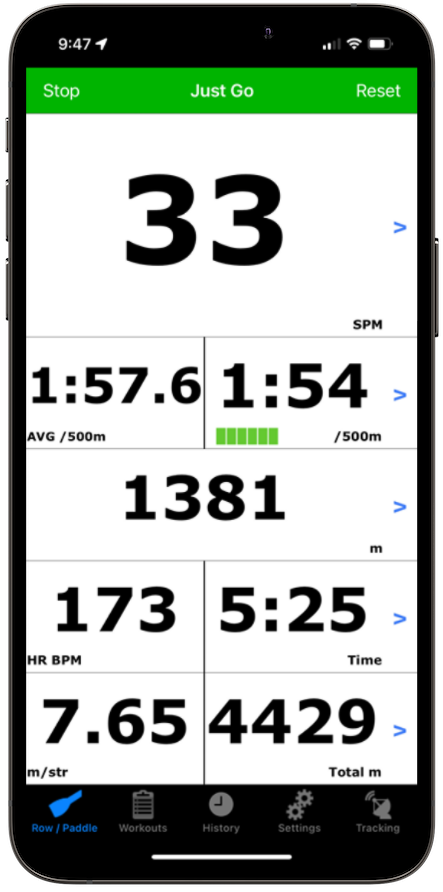
Starting with the iPhone 7, new iPhone models became far more resistant to water and many users now simply mount their phone with no additional water protection (although for salt-water rowing & paddling, additional waterproofing is still strongly recommended).
Smartphone displays have also improved dramatically and are now much more readable in sunlight (CrewNerd’s high-contrast “sunlight mode” also helps).
Support for the Apple Watch now means that you don’t even need to take your phone on the water! All of your custom workouts are automatically transferred to your watch, and your completed workout data is seamlessly transferred back to your phone where it appears in your CrewNerd history for viewing or exporting. And with ActiveLook’s augmented reality displays, your rowing data is right there in your field of view so there’s no need to glance at your watch while you row.
Thank you!
One thing that hasn’t changed in the last 15 years is that I’m still leading the development and support of the app. I’m incredibly grateful for the support and feedback I’ve received from our customers, and for the many of you who have volunteered to help test bug fixes and new features along the way.
Most of CrewNerd’s best features are the result of your feedback and suggestions! Here’s a partial list of features first suggested by you – our customers:
- Coach mode – in coach mode, the accelerometer is disabled and coaches can use the app to track time, speed, and distance, and tap the screen to check stroke rates. Custom workouts help keep practices on track.
- Custom courses – when you create a custom course, CrewNerd can automatically start and stop the timer when you cross the start & finish lines of the course. Great for time trials and head racing!
- Sunlight display mode – a high-contrast black-on-white display improves readability in bright sunlight.
- Support for vision-impaired athletes – configurable speech output lets blind or vision-impaired athletes choose exactly what data they want to hear and when.
- Vaaka cadence sensor support – this Bluetooth-connected sensor gives highly accurate stroke rates for all paddling sports.
- Waypoints – with support for waypoints, you can now get distance and predicted time to intermediate points in a custom course. CrewNerd can even help keep you on track with course corrections along the way!
We have an exciting year ahead of us! From March 2024 to February 2025, we will be celebrating CrewNerd’s 15th anniversary. Just one of the ways we will mark our anniversary year is by attending USRowing RowFest National Championships in July in Oklahoma City. Stay tuned for a year of events and updates from CrewNerd.
Tony Andrews
March, 2024
